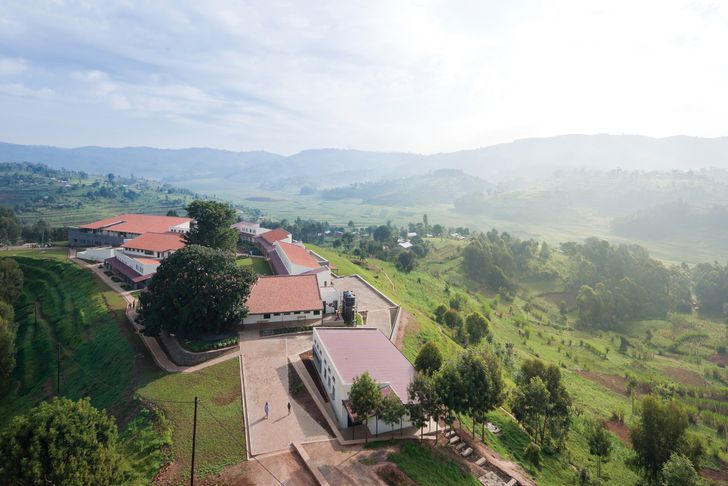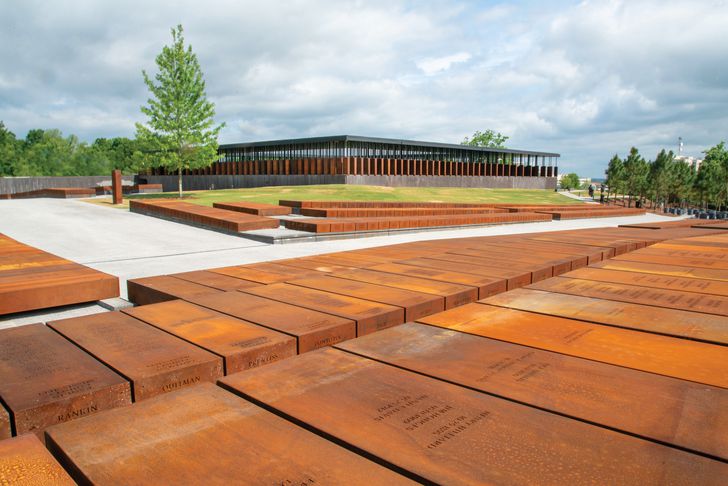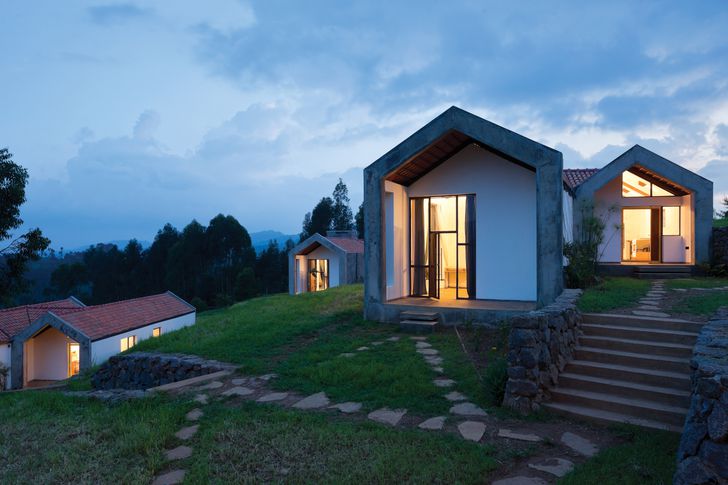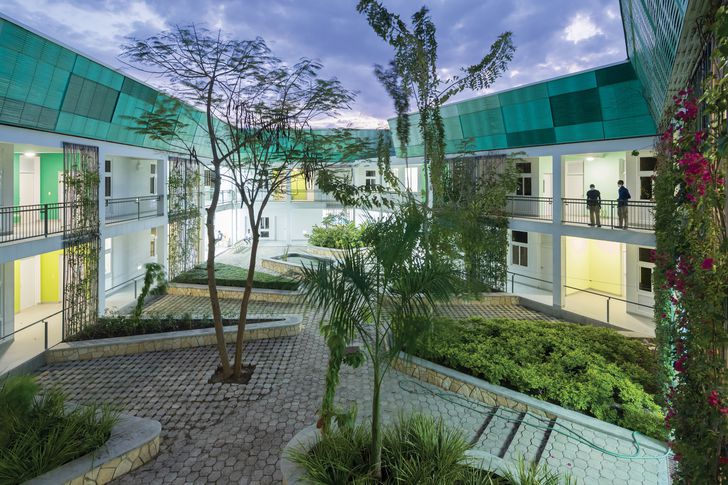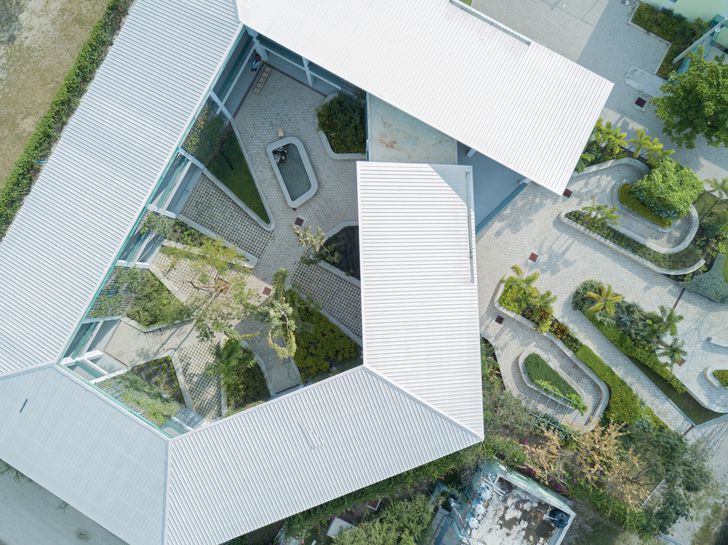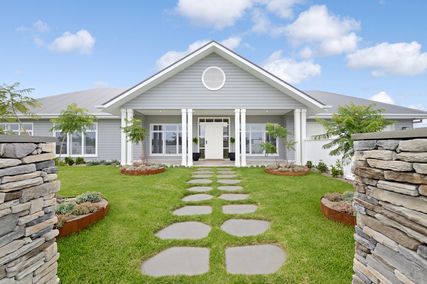Kieran Wong: I’m a little disappointed we’ve ended up having a one-on-one virtual conversation when we had planned a conversation with 1,000 people [at the 2020 National Architecture Conference, which is not going ahead as a result of COVID-19]. Hopefully we’ll see you here in Australia sometime – in the interim, thanks for taking time to chat.
It seems to me that there are many connections between the theme of Leverage and your practice. We are interested to discuss how Mass was established, and how it now works to amplify impact.
Can we start with the practice itself, which is a charitable not-for-profit? There aren’t many architectural organizations working in this way. Why did you adopt that practice model? What impact does it create?
Alan Ricks: Thanks for asking about that. We’re in a global crisis now, which is not unlike the recession we were in when Mass was founded in 2008. It was the peak of the globalization of the “starchitect” model. Amazing projects were being built all over the world – really pushing boundaries of creativity and constructability – but what was missing was an emphasis on the public realm. This work reinforced a business model that privileged serving the wealthiest – the people in power, the people with capital. Architecture had basically become a commoditized product because architectural services are so tied to the cost of construction, not correlated to the production of value.
This left out a huge market of work. We first realized this in Rwanda, where we were invited to work with the Ministry of Health and a non-profit trying to rebuild the health infrastructure in the wake of the 1994 genocide. There were very few architects in the country. Often, we heard, “Just give us the bare minimum.” Or, “We don’t need anything fancy.” Architecture had become the icing on the cake – nice to have if you could afford it. We realized that the government wasn’t hiring architects. They were building hospitals, but they weren’t putting out RFPs for design. They were finding other ways of project delivery.
We wanted to find a way to serve more people, but in order to break into that sector, we had to do it free. By volunteering on our first hospital project – we donated 25,000 hours of labour (over 12 people full-time for a year) – we were able to persuade them that design could do something more. It wasn’t simply about aesthetics or beauty, but actually delivering better services.
Mass worked with the Rwandan Ministry of Health, using local materials and labour- intensive practices, to deliver the Butaro District Hospital (2011).
Image: Iwan Baan
KW: Can I just ask two things? Most architects wouldn’t disagree that “design matters,” but not everyone is in a position to do what you did. How did you end up in Rwanda? And how do you fund 25,000 hours of time?
AR: We were mostly students doing it on the side. Paul Farmer, a founder of Partners in Health, was working with the Ministry of Health in Rwanda to help guide the rebuilding. And we just volunteered. We tapped into our classmates and their networks to find professionals that could donate time. We had some grant funding. The first team members were teaching to cover their costs. We asked people to work free or to take big pay cuts at first, in order to do this one project.
We see this type of pro bono work as lighthouse projects – “proof of concept” that helps make the case for investing in design. That project then led to Mass developing national standards for the government for all hospitals, and that led to government contracts to build two other hospitals.
KW: And when did that business model move to be a charity?
AR: When we graduated, we did a study of how others were doing socially impactful work, and we tried to figure out how to hack the system. We found three models.
The first is the academic model, which, in the US, is exemplified by Rural Studio at Auburn University. In this model, staff are mostly funded through faculty positions, with students doing the work.
Model two is all volunteers – for example, Architecture for Humanity, which operated as a matchmaking organization. They didn’t have a large, full-time staff, but they matched volunteers to projects.
The third model is The 1% Program of Public Architecture, or practices like Shigeru Ban, which does pro bono projects on the side.
We felt that what was missing was a way for people to do this as a career – not as a sacrifice. How do you build expertise and be able to do this work for a sustained period of time? The existing models really limited the size of projects, because of time and money. We asked, what would it mean to do a $20 million project? It means you need people who can commit years to build expertise.
The National Memorial for Peace and Justice in Alabama (2018), by Mass in collaboration with the Equal Justice Initiative, is the first national memorial to victims of lynching in the US.
Image: Alan Ricks
KW: You’re also talking about a move away from hand-built, handcrafted, small projects. These construction methodologies don’t allow for hospitals or schools or other large projects.
AR: That’s right, and you’re reinventing the wheel on each project. And we also saw challenges with incorporating quality control. We started out paying people very little. Now, we’re very proud to be competitive, paying right at the median. And we’re able to bring in top-calibre talent, because people see a lot of value in doing this type of work.
In the early days, our work relied almost exclusively on our philanthropy; we did most of the projects pro bono. After five years, we pivoted by establishing our Catalyst Fund. Now we raise about $2 million a year in donations that can be distributed in in-kind services. This means we are always ready. When Ebola hit in Liberia, we just sent a team.
The Catalyst Fund means we can offer an early architectural vision to help unlock capital funding – so, we’re not doing the whole project for free. Normally, we fund the front end through the Catalyst Fund, which means there is no burden on the non-profit.
KW: I imagine this has a lot of value in both defining a scope for the project, which designers and architects are very good at, and building a compelling narrative. It’s a great model.
AR: Exactly. Everyone gets the visualization idea, but the other thing is just as important. Paul Farmer refers to this as the “accompaniment” – the “being there” through the process to help clients by asking, “Is what you think you need what you really need? Can you afford it? What will it take to sustain it? Are you thinking about the metrics of success?” We have invested a lot of time in this process and have built a tool called Purpose Built, which helps non-profits and foundations trying to invest in capital projects to be more informed.
The Butaro Doctor’s Housing (2012) is adjacent to the Butaro District Hospital, with the aim of attracting and retaining skilled physicians.
Image: Iwan Baan
KW: I want to come back to policy. In Australia, Healthabitat has been collecting evidence on what they call “health hardware.” They can demonstrate – through decades of research and practice – the efficacy of preventative maintenance in housing, let’s say, versus hospital presentations or the transmission of disease, with dollar value. Things that are so very relevant right now!
They have been at a table many times with government, producing policy. And yet, it’s constantly reinvented because of cycles of bureaucracy and a shift, certainly in Australia, where departments and governments have been drained of expertise and knowledge.
AR: We definitely suffer from that. In the US, the extreme short-term view driven by the election cycle is very depressing.
But in the most fragile states, like Haiti and Liberia, where it’s been really challenging, we have built some great projects because of strong local partners. GHESKIO is an incredibly effective and inspiring Haitian-led organisation. After the 2010 earthquake, all of these international groups came in and failed – it’s like a graveyard of failed good intentions. The only reason we were able to get something built is because we had this local partner.
Countries like Rwanda, with incredibly strong governments, have been able to accomplish a lot because there is a person and a party that’s been in power for a long time, and has a relatively long-term view and is really invested in social services. It’s a small country – tiny – but with a dense population. So, you’re able to scale these interventions relatively quickly.
The transformation of the social services and the economy of Rwanda in the last 10 years is incredible. One of the most interesting for me is in the development sectors, which were just not visible 10 years ago. Now, there is a burgeoning arts scene, and food, and theatre, because of these investments.
In post-earthquake Haiti, Mass partnered with GHESKIO to build a new Tuberculosis Hospital (2015), designed to maximize patient comfort while minimizing transmission risk.
Image: Iwan Baan
KW: I’m curious about your take on policy that can last; that has real impact. How has Mass positioned itself to deliver policy or guidance frameworks that influence design output for long-term impact?
AR: COVID-19 has revealed the fragility of our built environment, and that chronic disinvestment in public space carries real risks.
We have seen this at a different scale in the cycle of disaster interventions – after earthquakes, after Ebola. People come in with a lot of emergency response, but don’t invest in the long-term infrastructure to actually build more resilience. A ton of money came into Haiti, a ton of money came into Liberia. Almost none of it is going to long-term systems, to building municipal water and waste systems, hospitals, or schools. We’ve had the same problem in the US. It’s been 75 years since we’ve had a federal government-level investment in that type of social fabric. And I don’t see it being likely to happen in the near future.
KW: That’s really the drift in global political systems. What can architecture do when our bureaucracies are moving away from thinking about communities, society and the future, and towards immediate power and gain? Where does architecture find its leverage there?
AR: I think it’s the lighthouse project. Giving people a built symbol of what is possible can galvanize momentum and help lead to policy change, help lead to replication, help lead to greater investment.
KW: Political bureaucratic systems are too cumbersome. They rely on these lighthouse projects to see what is possible, and then get behind and support. It’s an interesting tension – to find organizations and communities or leaders that can generate enough momentum and funding to do something, which then sparks that greater change within government. And, hopefully, take some of the lessons back up into government, right?
Maybe in smaller systems, or in smaller forms of government, you can get to the top more quickly, and people are more open to change, to risk and opportunity. I wonder if the agility within smaller systems is partly the reason why those things work in places like Rwanda or Liberia, compared to the US?
AR: Absolutely. But even in the US, there is more power to make change happen at the municipal level. Mayors are driving change faster than the federal government.
In Rwanda, there was such a hunger for innovation and disruption – to not just accept the legacy systems that had developed in the West over the last century, and to develop something customized and optimized for its own place. It allowed a space to say, “What if we had a passively ventilated hospital?”
In post-earthquake Haiti, Mass partnered with GHESKIO to build a new Tuberculosis Hospital (2015), designed to maximize patient comfort while minimizing transmission risk.
Image: Iwan Baan
KW: And then research can be done on that hospital, and it becomes best practice, and more organizations or governments want it. That’s the kind of cycle you are hoping for.
One of the things that strikes me about the work you do, and way the practice has formulated a position, is the notion of a clear mission. The notion of community empowerment and agency has resonance across different areas in contemporary community development.
I’m curious about how you feel about that personally – what you feel Mass might be giving up or handing over?
AR: Every place has been quite different. Rwanda is a unique case for us, because now we have a team of about 90 people that are full-time there, in a country where, 10 years ago, there were 10 architects in the whole country. And the team is over 50 percent Rwandese – probably about 60 percent African nationals – and then a mix of people from all over the world. Our sense of engagement has really changed, because we have this vast network of collaborators, of artisans, of builders throughout the whole country. In some cases, we have worked in one community for a very long time. In Butare, we’ve done several phases of work: multiple rounds of doctors’ housing, the hospital, a cancer centre, and then a university – all in what was a relatively small town that didn’t even have power 10 years ago. It has created, I think, a pretty deep sense of collaboration that feels very local.
We’re working in Bangladesh right now and we have to start over. In this case, we are working with a local architect and partnering on the project. Hopefully, we’re bringing some perspective specifically around healthcare. We are really leaning on them to develop the relationships we need to do something neither of us would have been able to do on our own.
But, to answer your question, mostly we’re going to places that might not have been able to access architects before. That in itself is giving some agency. I don’t know that we’re relinquishing anything in the process, but it’s hopefully a kind of empowerment.
— Alan Ricks is a founding principal and the chief design officer of Mass Design Group. He leads strategy and design of the 100-person firm, which has projects in over a dozen countries that range from design to research to policy – a portfolio that continues to expand the role of design in advancing a more just world.
Source
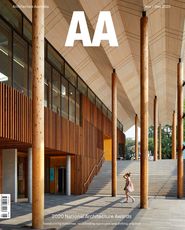
Discussion
Published online: 11 Feb 2021
Words:
Kieran Wong
Images:
Alan Ricks,
Iwan Baan
Issue
Architecture Australia, November 2020


